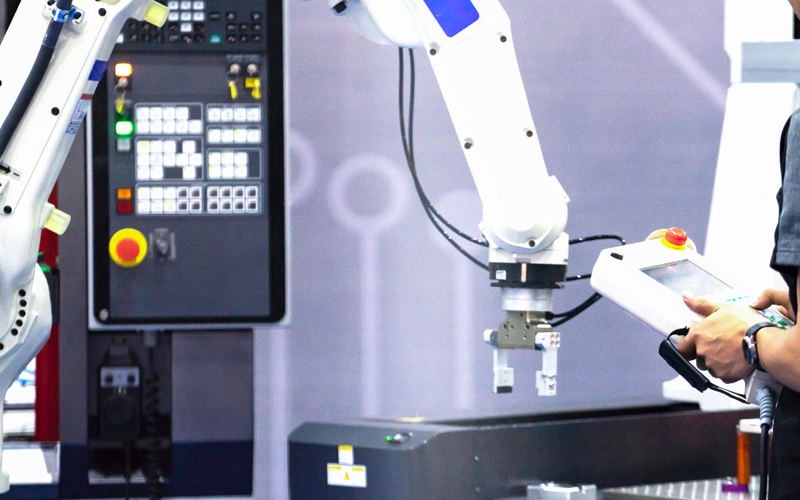Humans get bored of repetitive tasks, whereas robots don’t! Robotic Process Automation (RPA) is the result of humans automating mundane and repetitive tasks. RPA automates workflows to eliminate human involvement, ensuring higher productivity and accuracy. The robots can keep going 24*7 with consistent outputs, unlike humans who need breaks and are error-prone. Also, RPA can be replicated across functions having similar processes.
Understanding RPA and its drawbacks
RPAs get implemented through programmed bots that follow a predefined set of instructions to perform specific tasks. They work with the help of Artificial Intelligence (AI), learning from the data models used to train them to execute tasks efficiently. Typically, scraping, data extraction and migration, form filling, etc., are tasks automated as part of the RPA offerings. It is also possible to create bots that perform complex tasks, though it requires complex programming.
That brings us to a crucial drawback of RPAs. Even a minor change in the process workflow will require reprogramming the bots. Reprogramming bots performing complex operations becomes tedious and time-consuming, usually managed via RPA outsourcing. Maintenance of RPAs, therefore, is a big issue that organisations face in the automation journey. More importantly, complex programming needs skilled coders. Another drawback of RPA is that it is limited to individual tasks and cannot address end-to-end enterprise-wide process automation. It is because structured, curated data is needed to train the bots. Many enterprise functions still have unstructured data in varied formats. Lack of credible knowledge base and guidance also affects RPA implementation as it is tough to integrate it with other tools, especially legacy systems.
What is low-code or no-code RPA?
The need to eliminate the dependency on code and coders in application development gave rise to low-code or no-code technologies. Low-code or no-code is a UI-based approach to software development wherein the users drag and drop and record activities to automate processes.
The low-code development market spans technologies such as:
- Low-Code Application Platforms (LCAP)
- Intelligent Business Process Management Suites (IBPMS)
- Multi-experience Development Platforms (MDXP)
- Robotic Process Automation (RPA)
- Citizen Automation and Development Platform (CADP)
It is a big hit in RPA because of its utility. While no-code eliminates coding, low-code allows coding for bots in parts for complex automation. Low-code or no-code tools are also great for building new applications or enhancing existing ones. They help integrate with legacy systems or third-party tools easily to build more robotic process automation solutions. A Gartner report states that “by 2024, organisations will reduce operational costs by 30% by combining hyper-productivity* technologies with redesigned operational processes”. It further mentions RPA, LCAP, and AI as prime technologies making this happen. Hype-rautomation is a rapid approach to RPA. The global hyper-automation market size will touch USD 2,132.8 million by 2028, says a BlueWeave Consulting report. Let’s now explore the benefits of low-code and no-code RPA automation.
The benefits
Easy maintenance
Unlike standalone RPA, low-code or no-code RPA bots are easier to maintain. Hardly any programming is involved. Hence, even non-technical users can create or modify these bots easily. This benefit has given rise to citizen developers, the business users with little or no coding experience who build and maintain applications mainly for consumption within their functions. A Gartner report states that “by 2024, 80% of technology products and services will be built by non-technology professionals”. And low-code development tools are one of the prime factors driving this.
Time- and cost-effective
Earlier, any change in the process would result in tedious and time-consuming changes to code and underlying data, to train the bots. However, in low-code and no-code tools, the process is simple. The changes can be easily incorporated using the intuitive UI with drag-and-drop features, resulting in time and cost savings.
Makes automation of legacy systems affordable
Automating archaic systems involves a lot of time, money, and effort, even running into years and billions of dollars. Often, the underlying data is unstructured, and very few understand the system wholly to ensure smooth automation. Low-code systems help rebuild or automate these legacy systems faster, using APIs to structure data in a more streamlined way.
Can help bridge the engineering skill gap
Currently, many enterprises are struggling with the skill gap created by The Great Resignation. Many credible industry reports are predicting huge financial implications owing to this growing IT industry skill gap. A recent survey by Skillsoft, an American Edtech company, quoted 66% of IT decision-makers seeing skill gaps in their teams as a significant problem. Low-code development tools are a solution most enterprises are employing to solve this issue. These tools have a low learning curve, and applications developed using them have high reusability and scalability with enterprise-grade security. Also, organisations don’t have to spend on training employees on low-code platforms. Gartner predicts that, by 2023, “the number of active citizen developers at large enterprises will be at least four times the number of professional developers.” This prediction is a huge indication of how the winds are blowing for low-code RPA automation.
When enterprises use low-code or no-code RPA, they become agile and flexible to gain a time-to-market edge that is imperative for success. They will also be able to reskill employees quickly for in-house innovation at a lesser cost. Reskilling also aids employee retention. Experts suggest that low-code and no-code RPA has the ability to leverage AI benefits to develop complex mission-critical applications. It enables proactive automation through flexibility and customisation. These are compelling reasons for businesses to adopt low-code and no-code RPA, making it the new trend in automation.
*For organizations on the digital transformation journey, agility is key in responding to a rapidly changing technology and business landscape. Now more than ever, it is crucial to deliver and exceed on organizational expectations with a robust digital mindset backed by innovation. Enabling businesses to sense, learn, respond, and evolve like a living organism, will be imperative for business excellence going forward. A comprehensive, yet modular suite of services is doing exactly that. Equipping organizations with intuitive decision-making automatically at scale, actionable insights based on real-time solutions, anytime/anywhere experience, and in-depth data visibility across functions leading to hyper-productivity, Live Enterprise is building connected organizations that are innovating collaboratively for the future.







